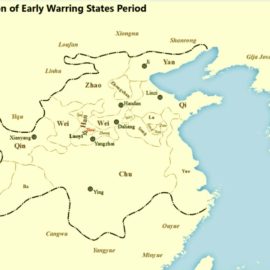

This article is an excerpt from the Shortform book guide to "The Marketing Plan" by William Luther. Shortform has the world's best summaries and analyses of books you should be reading.
Like this article? Sign up for a free trial here .
What is the growth stage of the product life cycle? What happens during this stage?
The second stage of the product life cycle is the growth stage. As William M. Luther says in his book The Marketing Plan, it’s when a product experiences high demand and sales increase.
Find out more about the product growth stage below.
Growing Your Sales
What happens during the growth stage of the product life cycle? Once a product or service gains enough traction, it benefits from growing consumer demand—thus, the market size increases. As a result, businesses increase production and the commodity becomes more widely available. Luther argues that companies that wait to enter the market until it’s experiencing a growth rate of five to 25% a year benefit from fewer risks—they save money on research and development because they just need to copy or improve upon the existing commodity.
(Shortform note: Luther suggests that the best time to enter a market is when it’s at a growth rate of five to 25% per year, but he doesn’t elaborate on how to figure out whether your desired market falls within this range. Business experts clarify how to determine the growth rate of a market: First, find the market size for at least two successive time periods—for example, year one and year two. Subtract the market size for year one from year two. Then, divide the result by the market size for year one and multiply by 100 to convert the result to a percentage. For example, if the market size was 100,000 in year one, and 125,000 in year two, you would calculate the growth rate as follows: (125,000 – 100,000) ÷ 125,000 x 100 = 20%.)
However, by this time, customers are already familiar with the businesses that introduced the original commodity. Therefore, Luther argues that businesses entering at this stage can only gain market share by taking customers away from existing competitors. This requires a heavy investment in branding, advertising, and sales.
Latecomers Build Market Share by Appealing to New Customer Groups
Marketing experts clarify why entering the market at the growth stage requires a heavy investment in branding, advertising, and sales. Once the market moves to the early growth stage, instead of building awareness to create demand, businesses need to convince consumers that their product or service is superior to all other offers in the market.
However, as previously discussed, businesses have a hard time achieving this once consumers begin to associate brand names with products—even if latecomers manage to produce a superior product, consumers will still regard them as inferior to the brand names they’re already familiar with.
Therefore, instead of trying to steal customers away from existing competitors to build market share, new entrants should focus on appealing to customer groups that have not yet purchased a version of the product. Common ways to achieve this include:
- Modifying the offer to fulfill different customer needs: For example, including additional features to accommodate specialized needs.
- Marketing the offer through different communication channels: For example, taking advantage of mass marketing to reach a wider audience.
- Developing different customer relationships: For example, offering extra after-sales support or content-co-creation facilities.
Adapting the price of the offer to accommodate different budgets: For example, offering a simplified, cheaper version of the product.

———End of Preview———
Like what you just read? Read the rest of the world's best book summary and analysis of William Luther's "The Marketing Plan" at Shortform .
Here's what you'll find in our full The Marketing Plan summary :
- How to build a team and motivate them to work together
- How to hire the right people—and keep them
- How to share and reinforce your vision






